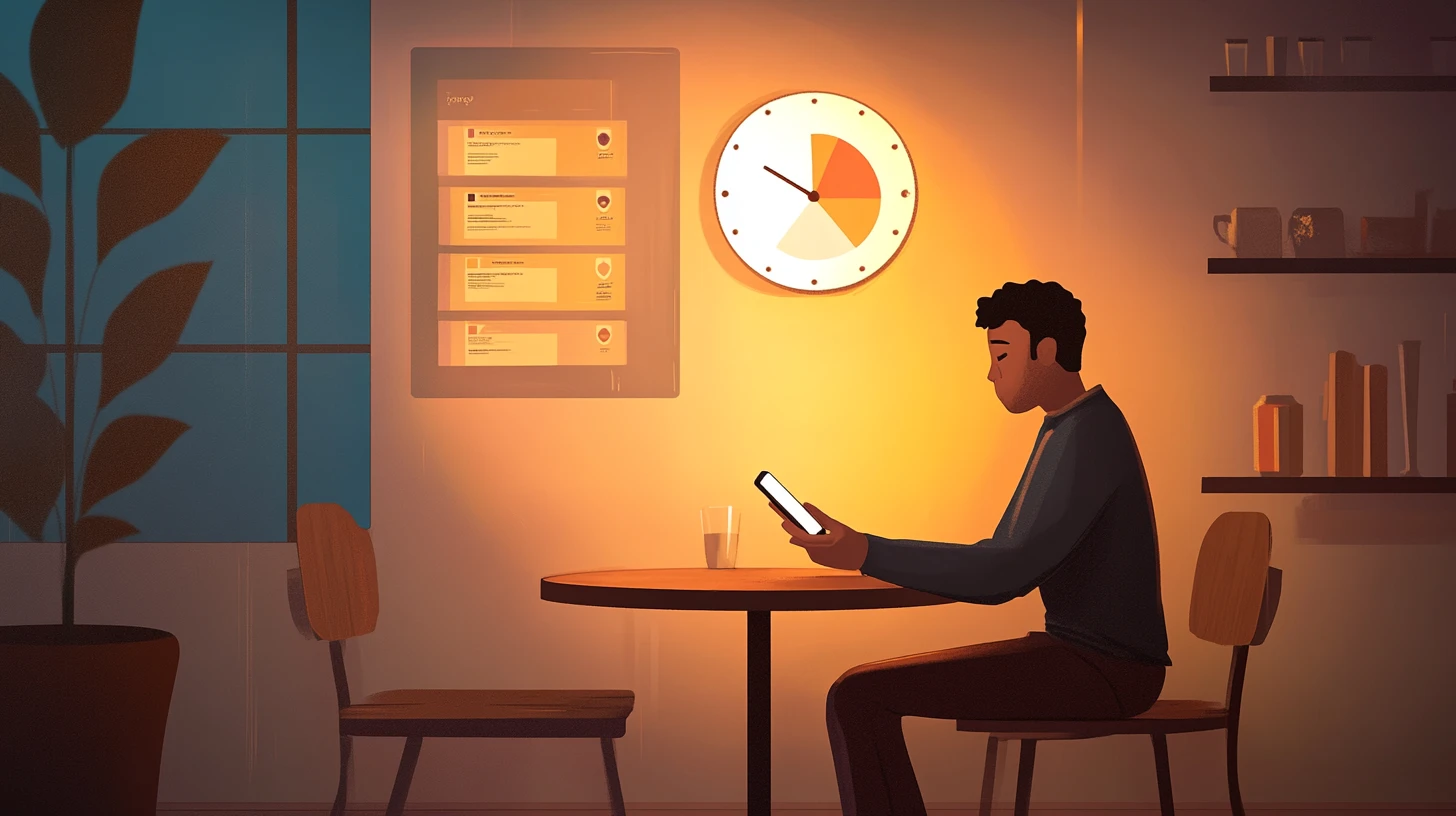Let’s be honest—you’ve only got so much emotional bandwidth to go around.
Between doom-scrolling through global crises, trying to keep your plants alive, and remembering to text your mom back, your capacity for human connection isn’t infinite. And yet we rarely apply the same intentional assessment to our friendships that we bring to other life domains.
The question isn’t whether to have friends (we need them), but rather: which friendships truly deserve your limited energy?
The Uncomfortable Math of Modern Friendship#

We pretend friendship exists outside the harsh reality of resource allocation. It doesn’t.
The average person has approximately 150 hours of discretionary time each month—time not consumed by work, sleep, or basic survival tasks. Every coffee date, group chat, birthday celebration, and late-night emotional support session draws from this limited reserve.
This isn’t about becoming coldly calculating with relationships. It’s about acknowledging the inescapable truth that every “yes” to one person is implicitly a “no” to someone else—including yourself.
The question becomes not “Is this a good friendship?” but “Is this friendship good enough to prioritize over other potential connections or personal needs?”
The Science of Friendship Quality#
We often rely on vague impressions to evaluate friendships: “We vibe well,” “They’re my people,” “We just click.”
But decades of relationship research have identified specific indicators that consistently predict which connections will nourish us and which will drain us—often in ways we don’t immediately recognize.
Here are five evidence-based criteria to help you evaluate which friendships truly deserve your precious energy:
1. Reciprocity That Doesn’t Require Accounting#
The most reliable indicator of friendship quality isn’t perfect equality in every exchange, but rather a natural equilibrium that emerges over time without requiring explicit tracking or resentment.
What research shows:
- Studies on relationship longevity consistently find that perceived fairness—not absolute equality—predicts satisfaction and sustainability
- The most problematic imbalances are those that follow consistent patterns rather than temporary fluctuations due to life circumstances
Signs of Healthy Reciprocity:#
- You can recall recent examples of both giving and receiving support
- Neither person keeps bringing up past favors as leverage
- When life temporarily demands more from one person, the dynamic naturally rebalances when the crisis passes
- Giving to this person feels energizing rather than depleting
Red Flags to Watch For:#
- You consistently feel anxious about whether you’re “doing enough” in the friendship
- The relationship follows a fixed pattern where one person always gives emotional support and the other always receives it
- You find yourself mentally tracking “debt” in the friendship
- After spending time together, you often feel subtly drained rather than nourished
2. Growth-Compatible Values#

Perhaps the most underrated predictor of friendship satisfaction is compatibility in core values and growth direction. This doesn’t mean identical interests or personalities—often opposite temperaments create wonderful complementary dynamics.
What matters is alignment in fundamental values about what constitutes a well-lived life and how people should treat each other.
The Value Crossroad Test#
Research by psychologist William Damon suggests asking these four questions to assess value alignment:
- What does this person believe makes life meaningful?
- How do they treat people who can do nothing for them?
- What do they consider worth sacrificing for?
- What behaviors do they consistently justify that you find troubling?
Friendships with dramatically different answers to these questions often create subtle tension that emerges during major life transitions or ethical dilemmas.
The strongest friendships involve people with shared core values but potentially different expressions of those values, each supporting the other’s growth while maintaining their own path.
Signs of Value Compatibility:#
- You can disagree on methods while agreeing on fundamental principles
- They challenge you in ways that align with your ideal direction, not against it
- Major life decisions (career changes, relationships, etc.) are met with nuanced understanding rather than fundamental confusion
- You feel comfortable being your authentic self rather than a curated version
Red Flags to Watch For:#
- You find yourself consistently self-censoring your true priorities or values
- Their vision of success feels fundamentally misaligned with yours
- They subtly undermine your growth in directions that matter to you
- You feel like you’re living in parallel realities regarding what matters most
3. Conflict Patterns That Deepen Rather Than Damage#
All meaningful relationships involve conflict. What distinguishes healthy friendships isn’t the absence of disagreement but rather the pattern of how conflicts unfold and resolve.
Conflict Erupts
Stage 1
In healthy friendships, conflicts begin with the assumption of good intentions. Both parties enter disagreement believing the other person cares about them—even while being upset. In problematic friendships, conflicts immediately trigger suspicion of malicious intent or character flaws.Communication Style
Stage 2
Research by Dr. John Gottman identifies "The Four Horsemen" that predict relationship failure: criticism (attacking character), contempt (expressions of superiority), defensiveness (deflecting responsibility), and stonewalling (shutting down). Healthy friendships avoid these patterns even during heated moments.Resolution Approach
Stage 3
Healthy friendships resolve conflicts through understanding rather than "winning." Both parties seek to comprehend the other's perspective even if they ultimately disagree. Problematic friendships use manipulation, guilt, or power plays to force resolution on one person's terms.Post-Conflict Connection
Stage 4
The most telling difference: after conflicts resolve in healthy friendships, the relationship feels stronger rather than weaker. Both people feel better understood rather than more distant. The disagreement becomes integrated into a deeper connection rather than creating a lingering wound.
Signs of Healthy Conflict Patterns:#
- Disagreements focus on specific issues rather than character attacks
- Both people can express negative emotions without the relationship feeling threatened
- Conflicts actually lead to feeling more understood rather than less connected
- You can recall examples of successfully navigated disagreements that strengthened the bond
Red Flags to Watch For:#
- Minor conflicts trigger extreme reactions or silent treatment
- Past disagreements remain as “untouchable” topics
- You avoid bringing up legitimate concerns due to anticipated reactions
- Conflicts consistently end with you apologizing even when you weren’t wrong
4. Identity Affirmation vs. Identity Pressure#

One of the most subtle yet powerful indicators of friendship quality centers on how the relationship affects your sense of identity.
Psychologists distinguish between relationships that exert “identity pressure” (pushing you toward specific ways of being) versus those offering “identity affirmation” (supporting your authentic self-expression and growth).
The Self-Expansion Model#
Research by Dr. Arthur Aron found that healthy close relationships expand our sense of self rather than constraining it. The best friendships make you feel like more of yourself, not less.
Questions to Consider:#
- After spending time with this person, do you feel more aligned with your authentic self or slightly “off-center”?
- Do you find yourself adopting speech patterns, opinions, or behaviors around them that don’t quite feel like you?
- Does the friendship expand your identity in welcome ways or restrict it in subtle ways?
- Can you express evolving aspects of yourself without explanation or apology?
Signs of Identity Affirmation:#
- You feel more connected to your authentic self after spending time together
- They seem genuinely delighted by your quirks and particularities
- The relationship provides safety for both consistency and evolution in who you are
- You rarely feel the need to calibrate your self-expression to maintain the friendship
Red Flags to Watch For:#
- You notice yourself consistently performing a specific version of yourself in their presence
- They seem uncomfortable or dismissive when you express new aspects of your identity
- You feel subtle pressure to maintain outdated versions of yourself to preserve the friendship
- Interactions leave you slightly confused about who you actually are or what you really think
Identity-affirming relationships consistently correlate with feeling energized after interactions, while identity-pressuring relationships typically leave you subtly depleted—even when the interaction seemed objectively “fun.”
5. Time Distortion#
Perhaps the most reliable indicator of friendship quality comes from a phenomenon psychologists call “subjective time perception”—how your brain unconsciously expands or contracts its perception of time passing.
This operates at a neurological level beyond conscious control and provides a remarkably accurate measurement of whether a relationship truly nourishes you.
The Neuroscience Behind Time Perception#
When we’re engaged in states of genuine connection, flow, and psychological safety, our brains process time differently:
- Attention density increases, causing subjective time to pass more quickly
- Stress hormones decrease, reducing our hyperawareness of time passing
- Reward circuitry activates, creating a sense of timelessness during the interaction
Conversely, when interaction creates subtle threat, our time perception stretches—making minutes feel like hours through heightened self-consciousness and stress response.
Signs of Positive Time Distortion:#
- You frequently find yourself surprised by how much time has passed
- Three hours together can feel like one hour
- You rarely check the time or think about what’s next while together
- Even after longer interactions, you feel like there’s more to talk about
Red Flags to Watch For:#
- You find yourself checking the time repeatedly during interactions
- You mentally calculate how much longer the hangout will last
- An hour together feels subjectively longer than an hour alone
- You feel relieved when the interaction ends, even if it was “nice”
This unconscious measure cuts through our rationalizations about friendships we think we “should” enjoy and reveals which connections truly deserve our investment.
Friendship as an Evolving Ecosystem#
The goal isn’t to find “perfect” friendships that score 10/10 on every dimension—such relationships rarely exist. Instead, aim to cultivate a friendship ecosystem where:
- Your closest inner circle consistently meets most of these criteria
- You maintain healthy boundaries with connections that offer value but also present challenges
- You gradually release investments in relationships that consistently drain more than they nourish
This ecosystem approach offers a more nuanced alternative to the “just cut them off” advice that dominates friendship discourse. Most relationships deserve neither unlimited investment nor complete abandonment, but rather calibrated energy based on their actual contribution to your life.
An Exercise for Friend Inventory#
Rather than making dramatic friendship decisions, try this more measured approach:
- Core Nourishing: Consistently energizing, affirming, reciprocal relationships that merit your highest investment
- Situational Value: Friendships with specific benefits but limitations that deserve contextual investment
- Growth Potential: Newer relationships showing promising signs that merit exploratory investment
- Energy Draining: Consistently depleting connections that deserve significantly reduced investment
By consciously categorizing your friendships, you can make intentional decisions about where your limited relationship energy goes without the guilt that often accompanies friendship transitions.
The Compassionate Art of Friendship Recalibration#

When you identify friendships that no longer serve your well-being, you have more options than just dramatic cutoffs or indefinite tolerance:
1. Natural Fading#
For many friendships, simply reducing contact frequency allows the connection to naturally evolve into a less central role without confrontation.
How it works: Gradually extend the time between interactions, keep conversations pleasant but briefer, and allow natural transitions (moves, job changes, etc.) to create distance.
2. Contextual Boundaries#
Some friendships work beautifully in specific contexts but become draining when extended beyond those parameters.
How it works: Continue engaging in settings where the friendship thrives (group gatherings, activity-based hangouts) while declining invitations for contexts where tensions emerge.
3. Honest Recalibration#
For significant friendships with problematic patterns, a direct but compassionate conversation about shifting dynamics can sometimes transform the relationship.
How it works: Express appreciation for the friendship’s importance while naming specific patterns that feel challenging, offering clear requests for how the relationship might work better.
4. Clean Release#
In rare cases—particularly where toxicity, manipulation, or fundamental value conflicts exist—a clear ending may be the most compassionate choice for both parties.
How it works: Choose a private moment, speak to your experience without blame, acknowledge the relationship’s meaningful aspects, and clearly communicate your need for distance.
What Actually Makes a Friendship “Worth It”#
Ultimately, friendship quality isn’t determined by how long you’ve known someone, how many memories you share, or even how much fun you have together—though these factors certainly matter.
The deepest measure of friendship worth comes down to a fundamental question: Does this relationship help you become more fully yourself?
The most valuable friendships:
- Cultivate your authenticity rather than performance
- Witness your evolution rather than confining you to past versions of yourself
- Expand your perspective without demanding you adopt theirs
- Provide safe harbor during storms without keeping you from sailing when seas calm
- Hold mutual investment that flows naturally without constant monitoring
Such friendships merit your fullest energy not out of obligation or history, but because they actively contribute to your becoming the person you most want to be.
Friendship Dynamics FAQs
What about friendships with significant history but current problems?
How do I handle friendship transitions without excessive guilt?
What if a friendship feels both nourishing and draining simultaneously?
How do you know when to work on improving a friendship versus accepting its limitations?
What about friends going through difficult times who need more support than they can give?
The friendships most worth your precious energy are those that leave you feeling more deeply connected to yourself, others, and what matters most—not from obligation or performance, but through the genuine alchemy that happens when two people truly see and appreciate each other’s authentic nature.
